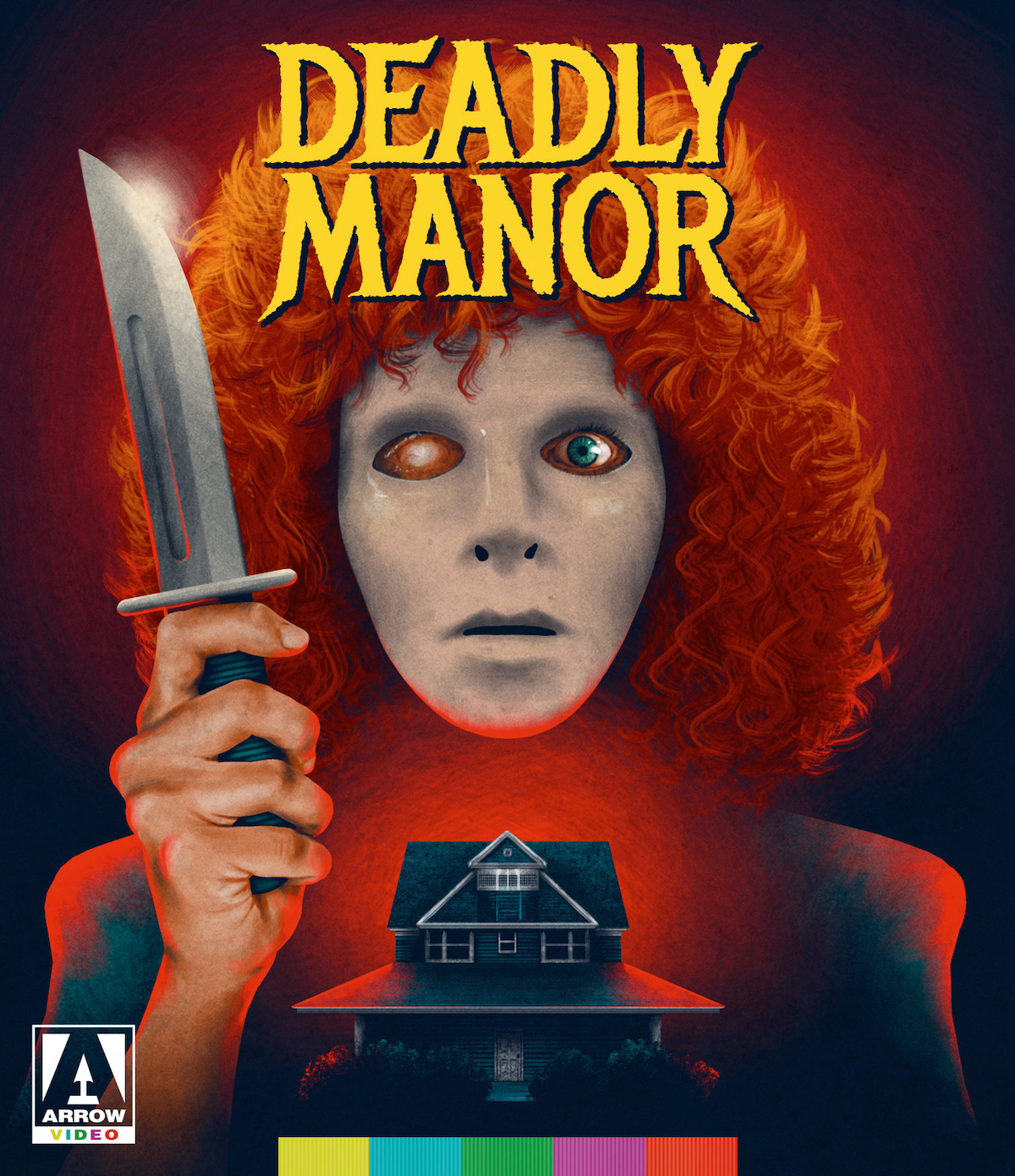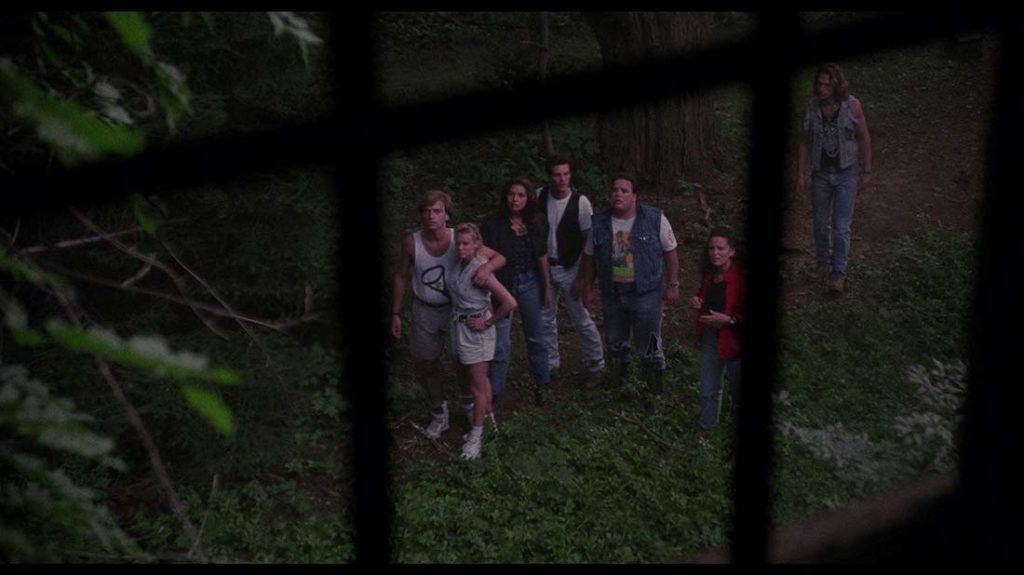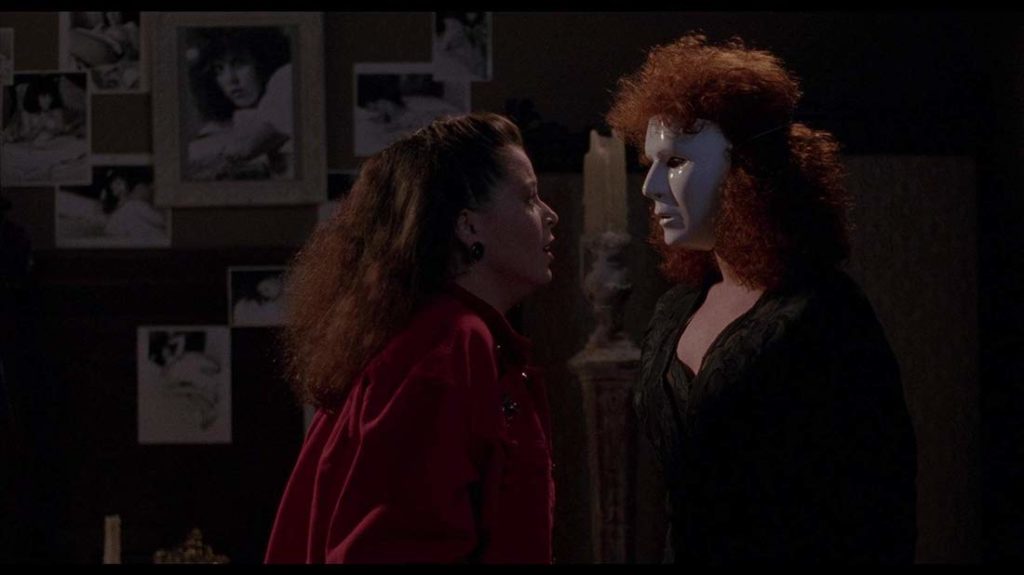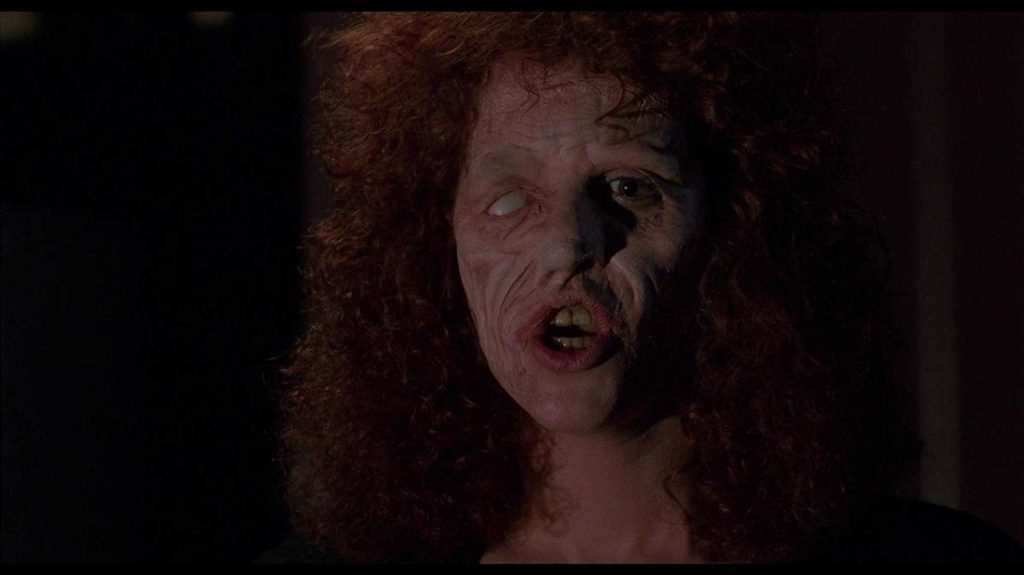DEADLY MANOR (1990)
A group of teenagers take refuge in an old, deserted mansion... only to realise they aren't alone as some of them turn up dead.

A group of teenagers take refuge in an old, deserted mansion... only to realise they aren't alone as some of them turn up dead.


There’s comfort in routine, and therein lies the charm of the slasher. Once you look past the blood, sex, and mystery, the overarching appeal of horror’s most critically maligned genre is a broad sense of familiarity and predictability. By the early 1990s, though, horror fans had lived to see five more Halloween‘s and slept soundly through six Nightmares on Elm Street, so the tried-and-true formula had grown stale. A genre as inherently repetitive as this was bound to get exhausted quickly, and so it was that Spanish director José Ramón Larraz’s Deadly Manor became the ultimate embodiment of a genre past its prime.
With all the energy of a struggling community theatre troupe, Deadly Manor serves up every cliché that earned slashers a bad reputation: flat performances, rigid character archetypes, and a half-baked plot. Without much blood-and-guts pyrotechnics to make up for it. From the get-go, there’s no illusion that the six unlucky protagonists are anything but walking horror tropes. There’s ‘the stoner’ Peter (Jerry Kernion), ‘the boyfriend’ Tony (Greg Rhodes), the ‘mysterious hitchhiker’ Jack (Clark Tufts), the ‘cautious girl’ Helen (Claudia Franjul, whose role amounts to yelling “this house is evil!” before running into the woods), ‘the comic relief’ Rod (Mark Irish), and anonymous murder fodder (Liz Hitchle, Kathleen Patane). The latter two characters are named in the credits as Susan and Anne but identified in the subtitles as “woman #1” and “woman #2.”

This gang of naïve twenty-somethings are on their way to a lake for a weekend getaway when they get rained in and decide to stop at a seemingly abandoned old, dark house off the beaten path. They go through the typical horror movie motions, finding red flag after red flag—a beat-up car on the front lawn made into a shrine to an unknown woman, a basement dungeon filled with coffins, a room filled with human scalps in jars (“maybe she’s a collector!”), a binder filled with photos of corpses lined up on the grass—and decide against all odds to stay the night anyway. Throughout it all, the dialogue is punctuated with ‘90s slang that was never quite in vogue, with one character describing the house as “major weird” and another exclaiming, upon seeing a framed photo of the woman from the shrine, “Hey look, it’s the same dame that was in the car!” Before you know it, members of their party are disappearing under mysterious circumstances, and the psychotic disfigured homeowner has rudely interrupted their evening.

None of that necessarily guarantees a disappointing slasher, but the trouble is that, on top of all the shoddy filmmaking, it commits the ultimate sin of genre movies: it’s pretty boring. José Ramón Larraz actually had a pretty illustrious horror career leading up to this, his final work in the genre. His films Symptoms (1974) and Vampyres (1974) are nightmarish masterpieces, and Edge of the Axe (1988), his first attempt at a straightforward slasher, is now considered a minor cult classic. There are flashes of that unlikely auteur’s heyday in Deadly Manor, particular in the striking editing of a mid-film dream sequence which has more in common with his early erotic horror films than it does his more mainstream late-career efforts.

For the most part, however, it’s disappointingly anonymous and contains little to distinguish it from any other middle-of-the-road early-‘90s slasher. Even his knack for haunting dialogue in some of his early films has been subsumed by painful clichés: at one point, a soon-to-be murder victim yells at the killer “why us?” only to be met by the illuminating retort “because you deserve to die!”Lazy filmmaking has never equated to lack of enjoyment when it comes to horror—after all, Juan Piquer Simon’s Pieces (1982), a cult favourite among slasher fans, is beloved largely because it’s so bafflingly amateurish.
The key difference between Deadly Manor and a film like Pieces is that the latter is made with incompetence but passion, milking every overblown line reading and hysterical death sequence for all it’s worth. Larraz’s film is phoned-in and joyless; a regurgitation of ideas and images we’ve seen before without any sense of fun or surprise. When the dust settles, it’s not scary, not atmospheric, and not even all that bloody for a slasher film. After a career built upon transgressive, often shocking genre films, it’s too bad that Larraz’s swansong ended up being so nondescript and dull.
director: José Ramón Larraz.
writers: Larry Ganem, José Ramón Larraz & Brian Smedley-Aston.
starring: Clark Tufts, Greg Rhodes, Claudia Franjul & Mark Irish.
